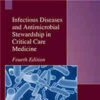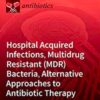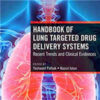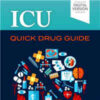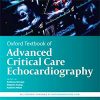Komodo dragon-inspired synthetic peptide DRGN-1 promotes wound-healing of a mixed-biofilm infected wound
nature.comCationic antimicrobial peptides are multifunctional molecules that have a high potential as therapeutic agents. We have identified a histone H1-derived peptide from the Komodo dragon (Varanus komodoensis), called VK25. Using this peptide as inspiration, we designed a synthetic peptide called DRGN-1. We evaluated the antimicrobial and anti-biofilm activity of both peptides against Pseudomonas aeruginosa and Staphylococcus aureus. DRGN-1, more than VK25, exhibited potent antimicrobial and anti-biofilm activity, and permeabilized bacterial membranes. Wound healing was significantly enhanced by DRGN-1 in both uninfected and mixed biofilm (Pseudomonas aeruginosa and Staphylococcus aureus)-infected murine wounds. In a scratch wound closure assay used to elucidate the wound healing mechanism, the peptide promoted the migration of HEKa keratinocyte cells, which was inhibited by mitomycin C (proliferation inhibitor) and AG1478 (epidermal growth factor receptor inhibitor). DRGN-1 also activated the EGFR-STAT1/3 pathway. Thus, DRGN-1 is a candidate for use as a topical wound treatment. Wound infections are a major concern; made increasingly complicated by the emerging, rapid spread of bacterial resistance. The novel synthetic peptide DRGN-1 (inspired by a peptide identified from Komodo dragon) exhibits pathogen-directed and host-directed activities in promoting the clearance and healing of polymicrobial (Pseudomonas aeruginosa & Staphylococcus aureus) biofilm infected wounds. The effectiveness of this peptide cannot be attributed solely to its ability to act upon the bacteria and disrupt the biofilm, but also reflects the peptide’s ability to promsote keratinocyte migration. When applied in a murine model, infected wounds treated with DRGN-1 healed significantly faster than did untreated wounds, or wounds treated with other peptides. The host-directed mechanism of action was determined to be via the EGFR-STAT1/3 pathway. The pathogen-directed mechanism of action was determined to be via anti-biofilm activity and antibacterial activity through membrane permeabilization. This novel peptide may have potential as a future therapeutic for treating infected wounds. A synthetic peptide based on a natural molecule found in the Komodo dragon promotes healing of biofilm-infected wounds. Peptides are small protein-like molecules. Monique van Hoek, Barney Bishop and colleagues at George Mason University in Virginia, USA, isolated a natural peptide with some antimicrobial properties from Komodo dragon plasma. They designed a modified synthetic version with rearranged amino acids, named DRGN-1 in recognition of the "Komodo dragon" peptide that inspired it. In preliminary trials, DRGN-1 enhanced the healing of biofilm-infected wounds in mice, and was more effective than the natural peptide. This may be due to both bacterial- and host-directed effects. DRGN-1 reduced biofilm and bacterial number while increasing wound closure. The authors suggest DRGN-1 could be developed into a therapeutic agent that may treat the biofilm-infected wounds that are increasingly resistant to conventional antibiotics.


